George Stubbs Biography
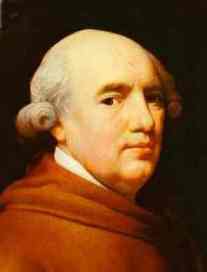
George Stubbs belongs to the artists whose names are re-discovered in the 20th century. At his time he was known only to a narrow circle of aristocratic sportsmen and horse lovers, for his contemporaries he was a mere horse-painter. A broadened critical view of the 20th century revealed the full extent of his achievement, his innovations and exceptional originality and power. His works are still mostly, with some exceptions, in private collections in the houses for which they were executed. This, of course, restricts the number of his admirers. But his reassessment has lifted him to the level of the greatest of his time.
George Stubbs was born in 1724 in Liverpool, son of a currier and one of five children. He had a minimum of formal instruction: in 1739 he was briefly a pupil of the minor painter Hamlet Winstanley. This was apparently enough to launch Stubbs off as a provincial portrait painter. As such he worked (1743-53) in Wigan, Leeds, York and at Hull. When at York he already knew enough anatomy to give private lessons to medical students at York Hospital and this led to his commissions in 1751 to illustrate a book on midwifery by Dr. John Burton. He learnt enough of etching from a local engraver to etch the plates himself.
His interest in anatomy and its studies continued all his life and proved to be important not only to his art but also a new contribution to science. In 1766 his The Anatomy of the Horse was published, which added to his prestige; he worked on a comparative anatomy of a man, a tiger and common fowl until his death, it was left incomplete.
At the age of 30, in 1754 he went to Italy by boat. He is said to have gone with no enthusiasm for Italian art, but with a desire to confirm his view that nature, not art, was the only source of inspiration and improvement. On the return journey he made a stop in Marocco. It is believed that a scene he saw there inspired his later picture Horse Attacked by a Lion (1762-1765). In 1756, his son, George Townley Stubbs (d.1815), was born by Mary Spencer who had become his common-law wife. In 1759, the family moved to London.
In the 1760s-1770s, Stubbs lived in London. The nature of his commissions required him to travel almost as much as a topographical watercolourist of his day. A series of masterpieces mostly belonging to this decade was that depicting horses and foals. Some of the horses named and were painted for their owners, but others may have been prompted by Stubbs’s own liking for variations on the theme Mares and Foals in a Wooded Landscape (1760-1762), Racehorses Belonging to the Duke of Richmond Exercising at Goodwood (1760-1761), Mares and Foals Disturbed by an Approaching Storm (1764-1766). As portraits his horses were satisfying to his patrons: Whistlejacket (1761-1762).
His powers, however, expanded in other directions. There was an easy transition from the portraiture of mounted sportsmen to the open-air'conversation' picture without reference to hunting or racing. From the end of the 1760s he produced magnificent examples of the genre The Melbourne and Milbanke Families (1769-1770), John and Sophia Musters Out Riding at Colwick Hall (1777).
A separate development beginning in the 1760s was Stubbs’s portrayal of wild animals. A unique product of an imaginative kind was the horse and lion series: Horse Attacked by a Lion (1768-1772). He was commissioned to paint the first kangaroo brought to England, for another client he painted a moose The Moose (1770); there were commissions for an Indian rhinoceros, a baboon with a macaque monkey, a yak, and other animals. An exceptional commission was that commemorating the gift of a cheetah to George III by the Governor of Madras, Sir George Pigot (later Lord Pigot) Cheetah with Two Indian Attendants and a Stag (1764-1765).
In the 1770s, Stubbs embarked on new enterprises: he experimented with enamel painting. He consulted Josiah Wedgwood about the possibility of making large pottery plaques on which the enamel process could be used. Josiah Wedgwood invited Stubbs to stay at his Etruria headquarters and experiment. Stubbs lived with the famous potter in 1780, using the process on pottery plaques in portraits of Wedgwood and his family, creating experimental paintings on ceramics. In the great paintings that were still to come, he reverted to oils, mostly on smooth panels rather than canvas.
An Associate of the Royal Academy in 1780, Stubbs was elected to full membership in 1781. The self-portrait of that year, executed in enamel on an oval Wedgwood plaque Self-Portrait (1781), shows him at fifty-seven. The Academy did not look kindly to experiments of the kind, most of its members holding to the conviction that painting in oils was the proper exercise of professional skill, even watercolor being grudgingly admitted to its exhibitions. A great development of this decade was his rendering of rural life and work, especially in the two oil paintings on panel, The Reapers (1784) and The Haymakers (1785).
In 1790s the Prince of Wales commissioned a painting of members of his favoured regiment, which exercised Stubbs’s powers afresh. Soldiers of the 10th Light Dragoons (1793). Other works to royal commission included the portrait presumed to be of Laetitia, Lady Lade (1793). The Prince’s commissions was further extended by the herd of red deer he had acquired. Red Deer Stag and Hind (1792). In all, the 18 paintings by Stubbs, still preserved at Windsor Castle and Buckingham Palace, show his powers undiminished and indeed in some ways strengthened as he neared the age of 70.
Stubbs died in 1806, July 10, in poor financial circumstances.
Bibliography
Stubbs & the Horse by Malcolm Warner, Robin Blake, Lance Mayer, Gay Myers. Kimbell Art Museum, 2004.
The Art of George Stubbs by Venetia Morrison. Wellfleet Press, 1990.
George Stubbs by Martin Myrone. Tate, 2003.
George Stubbs and the Wide Creation: Animals, people and places in the life of George Stubbs, 1724-1806 by Robin Blake. Chatto & Windus, 2005.
Memoir of George Stubbs by Ozias Humphry, Joseph Mayer. Pallas Athene, 2005.
George Stubbs: The Complete Engraved Works by Christopher Lennox-Boyd, Rob Dixon, Tim Clayton. Philip Wilson Publishers, 2004.
- Engravings From The Anatomy Of The Horse.
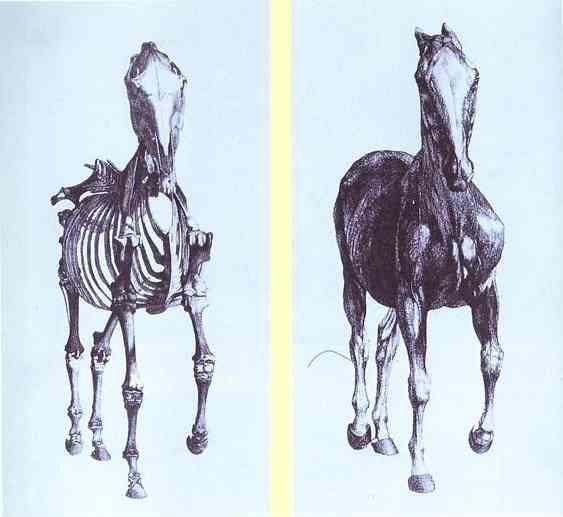
1766. .
- Horse Attacked By A Lion.
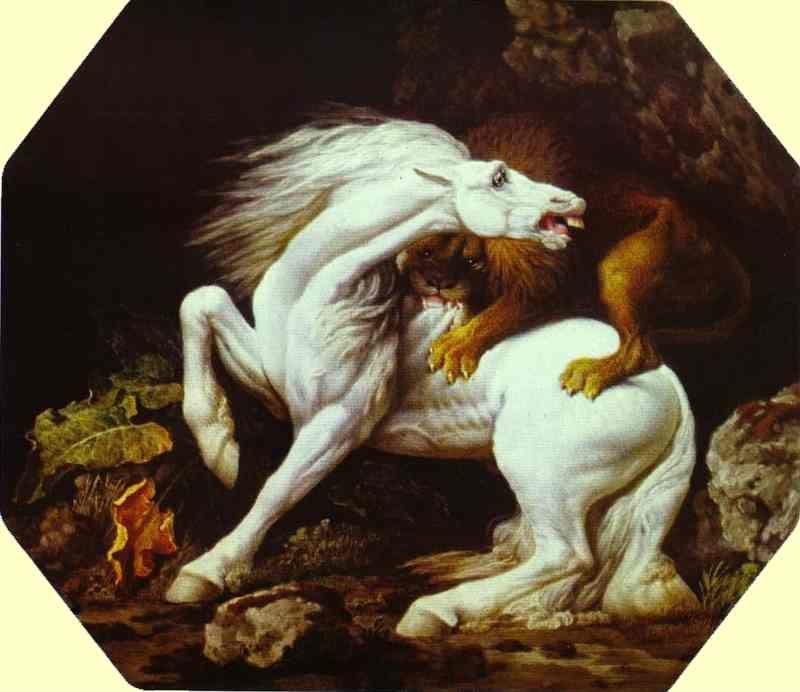
1762-1765. Oil on canvas. Tate Gallery, London, UK.
- Mares And Foals In A Wooded Landscape.
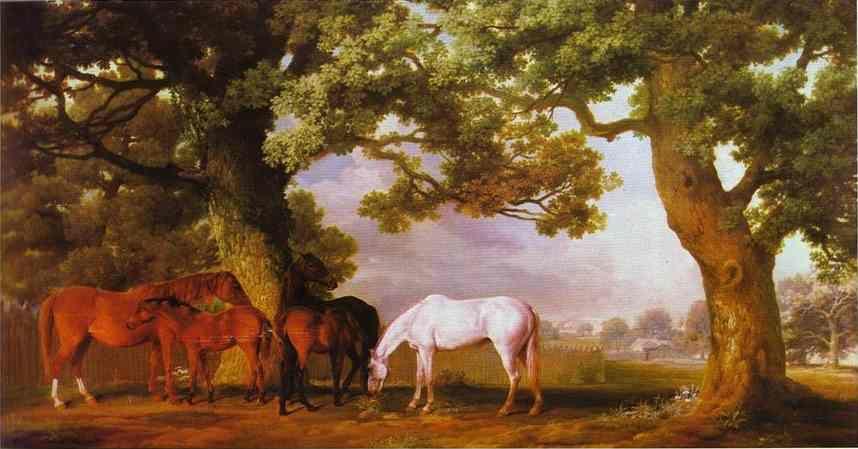
1760-1762. Oil on canvas. Trustees of the Grosvenor Estate, UK.
- Racehorses Belonging To The Duke Of Richmond Exercising At Goodwood.
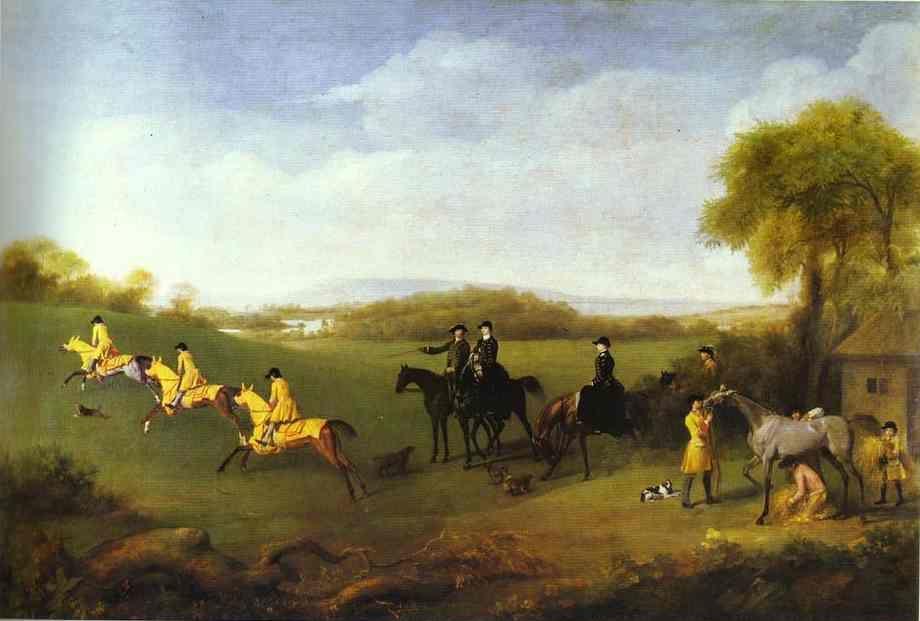
1760-1761. Oil on canvas. Goodwood House, UK.
- Mares And Foals Disturbed By An Approaching Storm.
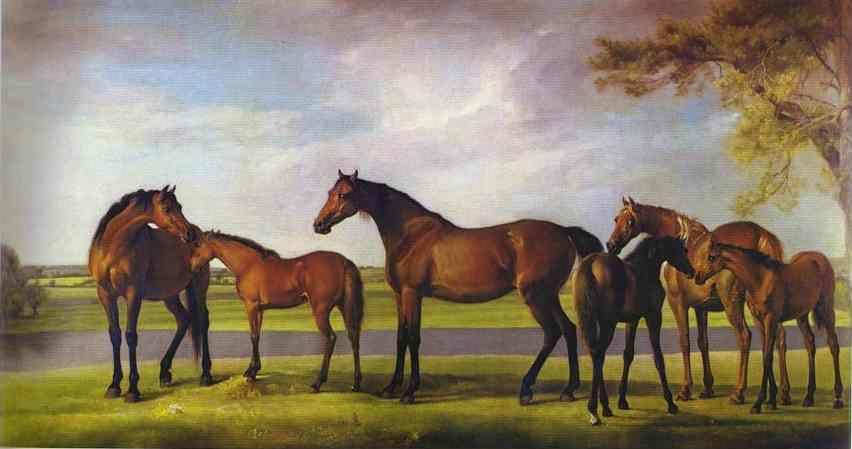
1764-1766. Oil on canvas. Viscountess Ward of Witley, UK.
- Whistlejacket.
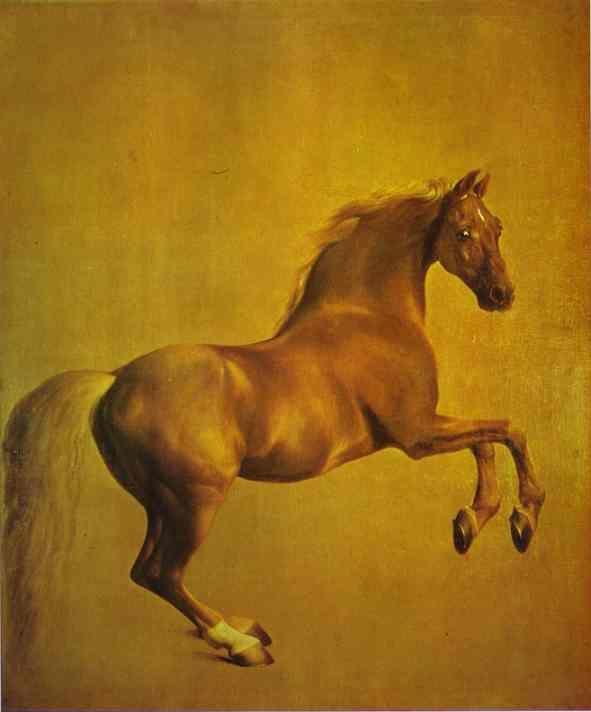
1761-1762. Oil on canvas. National Gallery, London, UK.